Like all mornings on the Carribean coast of Colombia, that one in early August was hot and humid. Instead of spending it in Cartagena, where we were staying at the time, we were heading south to a small village of San Basilio del Palenque, known as the first free African town in the Americas.
During the one-hour drive, Diover, our guide – a young and cheerful African man, was telling us about his community. Inhabited by Afro-Colombians, descendants of the African slaves kidnappend and brought to Cartagena by the Spanish, the village is a corner of African culture in Colombia.
As we were crossing rivers and marshlands and passing banana plantations, Diover turned from his front seat and said:“Palenge a senda tielan ngombe ri nduse i betuaya”.
That’s palenquero, the language he grew up speaking in the village. With its roots in the Kikongo language of Congo and Angola, Portuguese, the language of the slave traders, with Spanish and Dutch added for good measure, it survived for centuries in this small community.
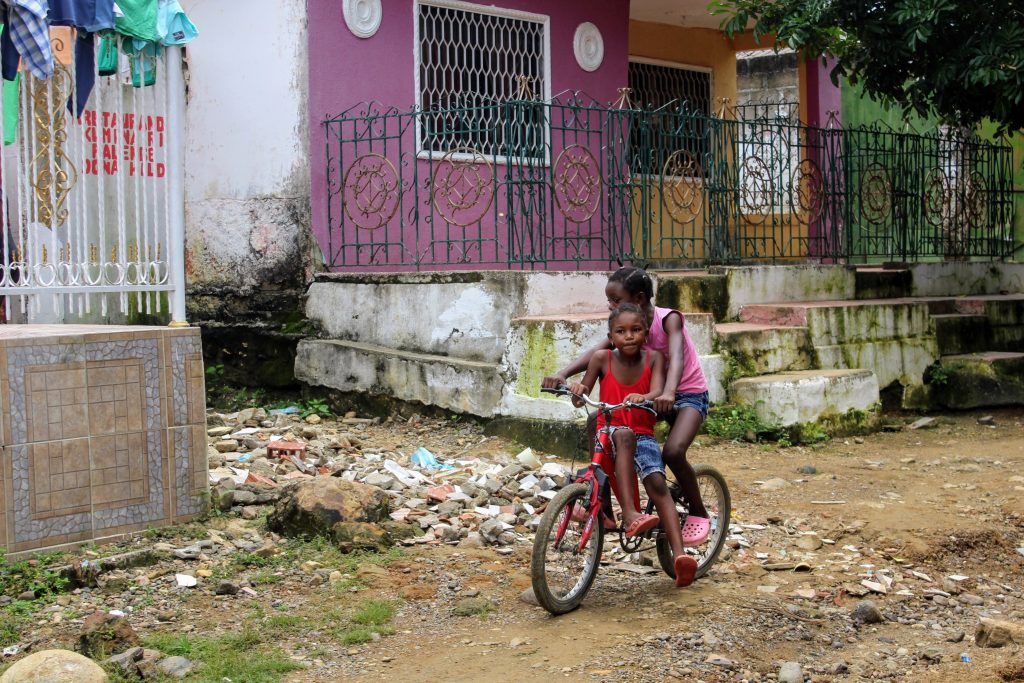
Arriving at the village, we were greeted by children on bycicles and pigs wandering through dirt roads.
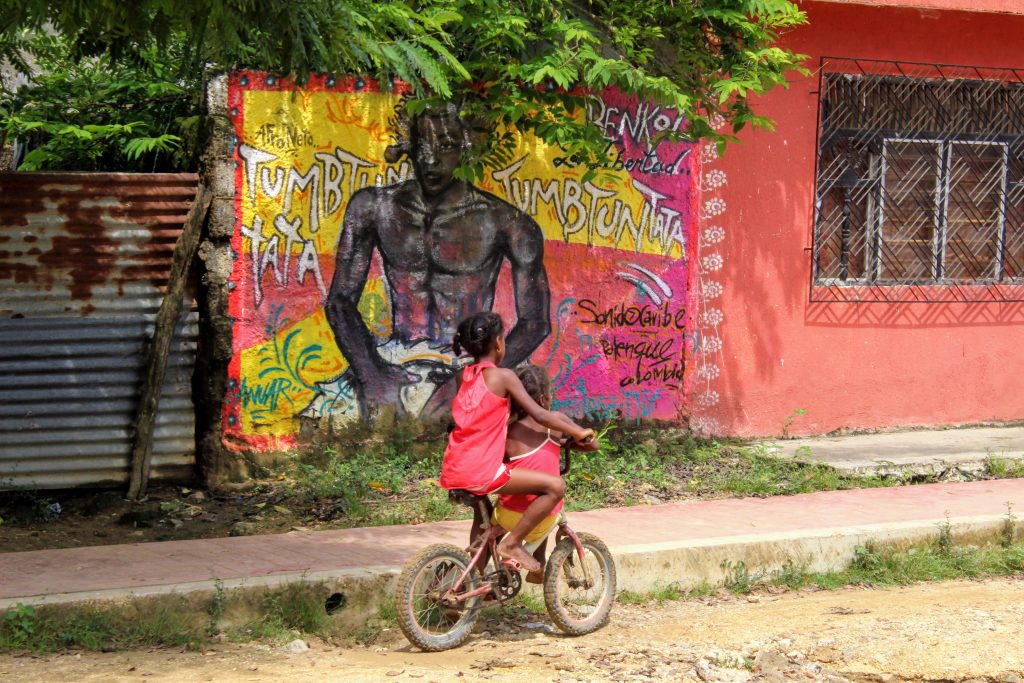
Young women with umbrellas were strolling along the main square.
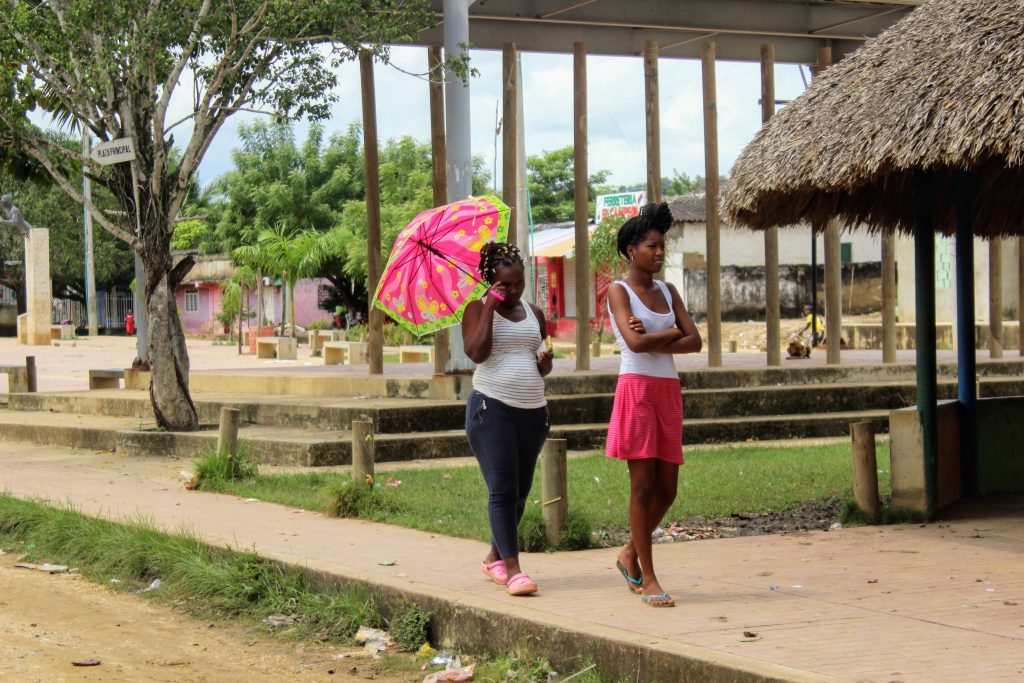
Men were speeding on bikes, to the envy of older boys.
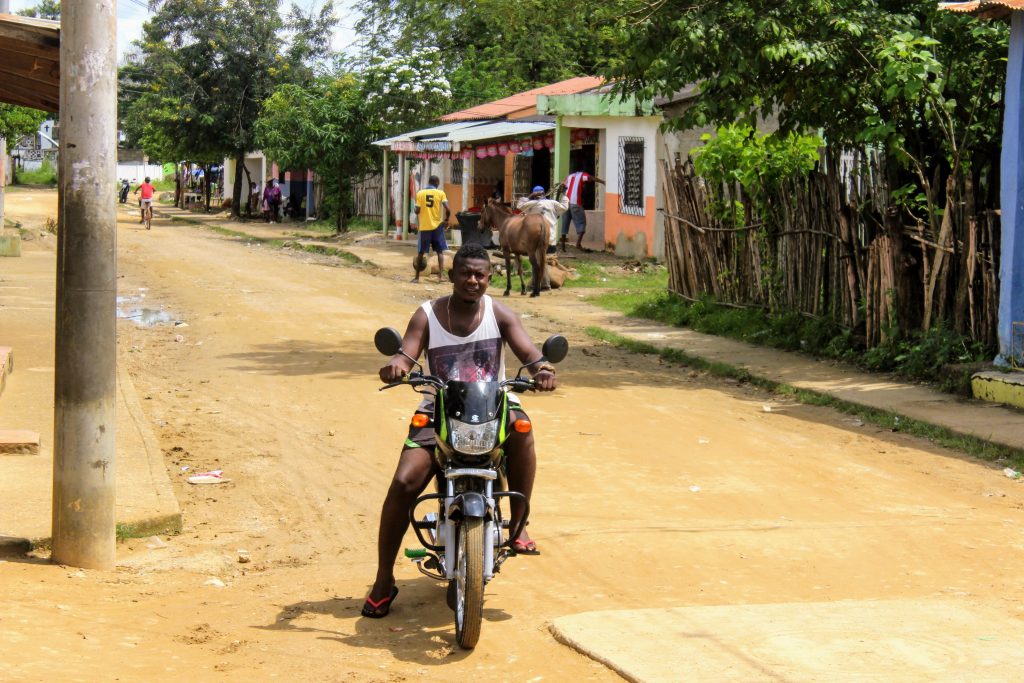
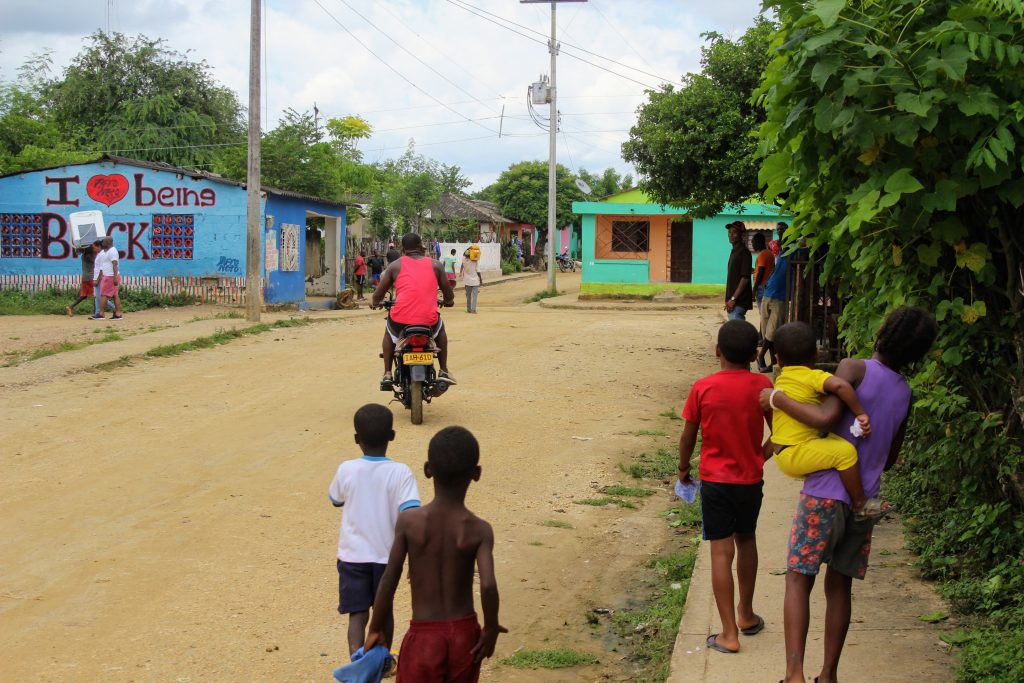
Seated in a straw-covered rotonda, Diover was telling us about the history of the village. Palenque, the Spanish word for a fortified village of runaway slaves, hints to the village origins. San Basilio de Palenque was settled sometime after revolts led by Benkos Biohó, a 17th-century African resistance leader who organized guerrilla attacks on the port of Cartagena with fighters armed with stolen firearms. Eventually, the Spanish Crown issued a Royal Decree guaranteeing freedom to Palenque de San Basilio, if they stopped welcoming new escapees.
While other palenques were vanqueshed, San Basillio not only survied, but managed to preserve its unique culture. In 2005 it was declared a Masterpiece of the Oral and Intangible Heritage of Humanity by UNESCO.
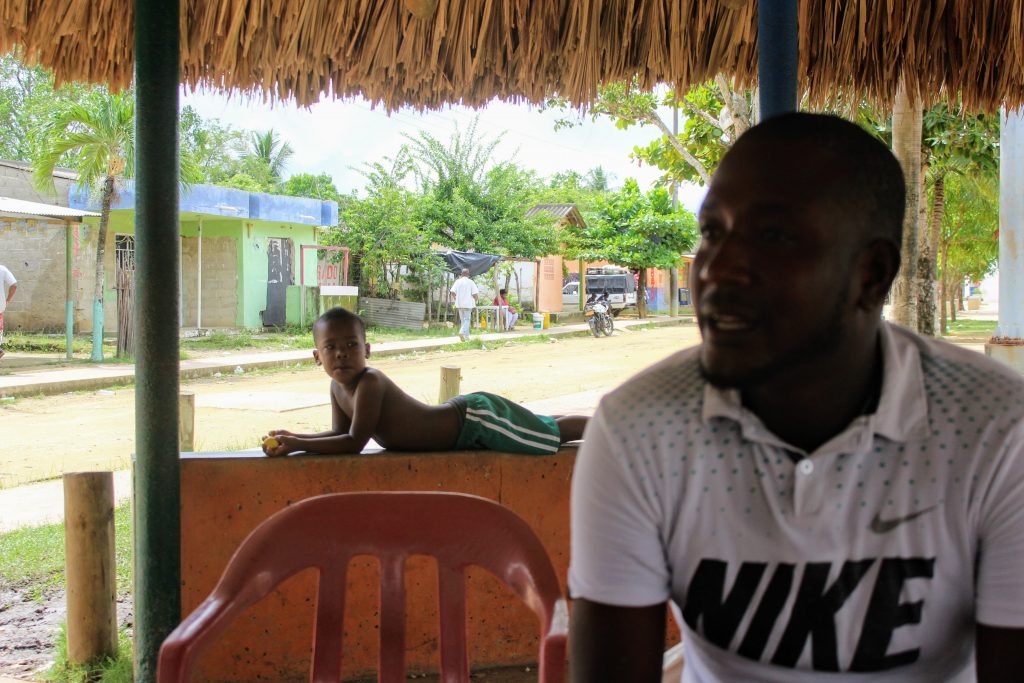
While we were getting a history lesson, Ayan was running in circles with a new friend.


Then the action moved to the nearby playground.
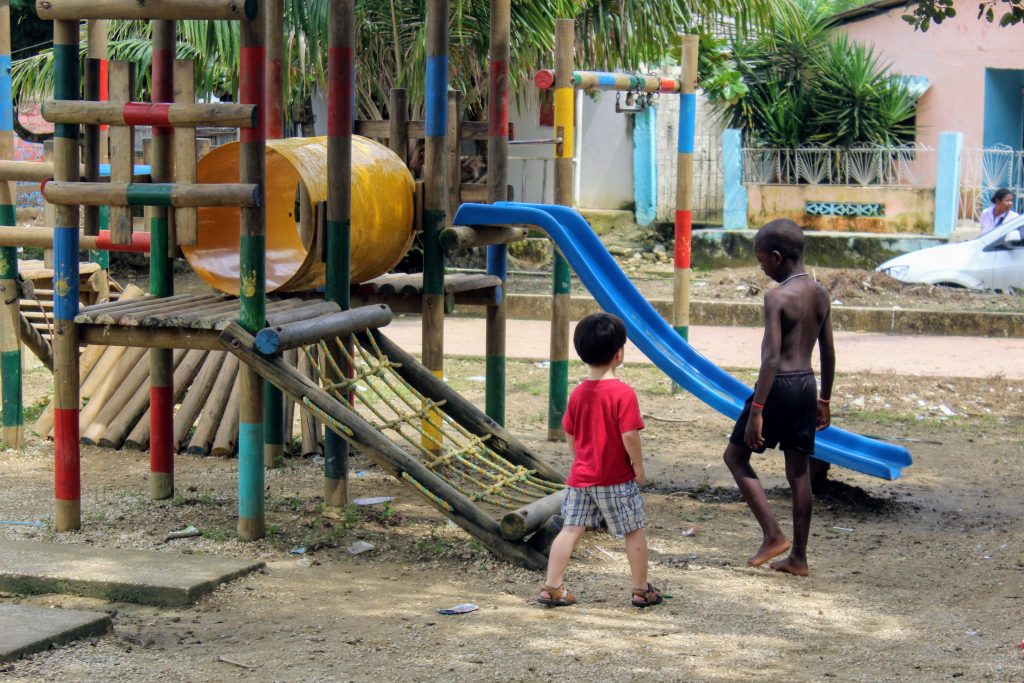
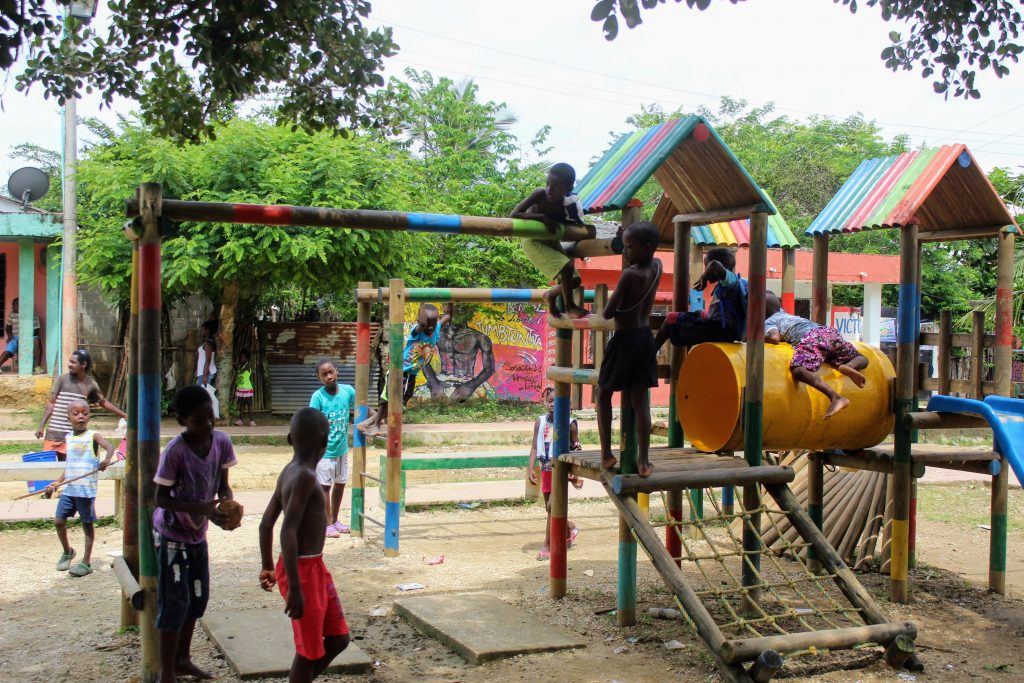
In the close-by tienda old men were resting, watching silently the village life around them.
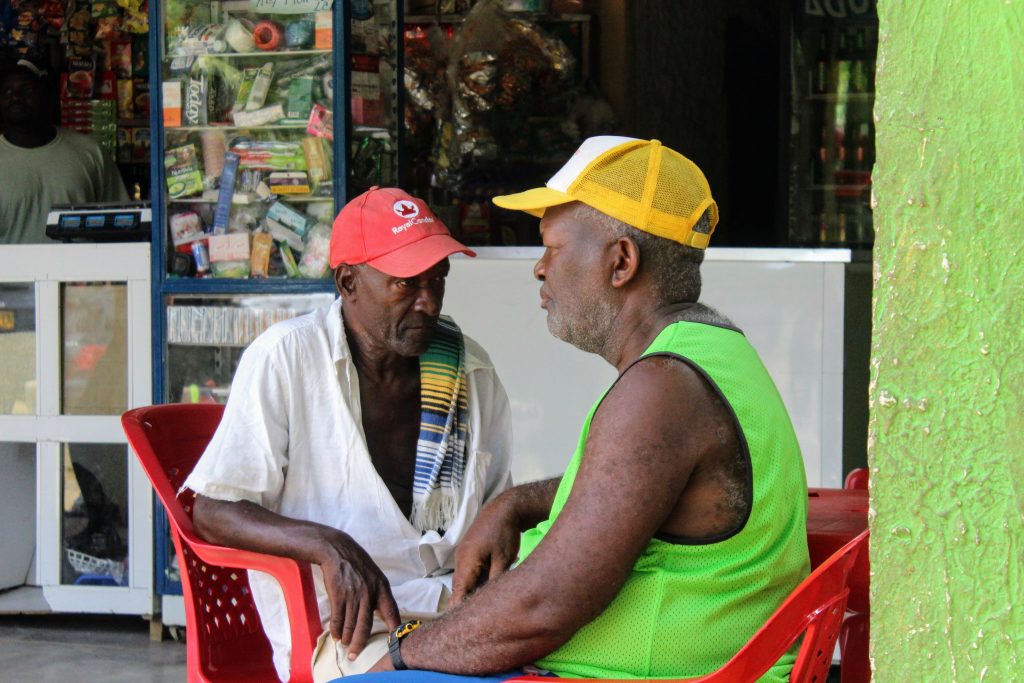
A main square momument to Benkos Biohó, the founder of the community, is a powerful testament to the value of freedom. Born into a royal family that ruled over the Bissagos Islands off the coast of what is today Guinea-Bissau, he was seized by Portuguese slave traders and transported to Cartagena. He established the maroon community of San Basilio de Palenque sometime in the 16th century. He was betrayed and hanged by the governor of Cartagena in 1621.
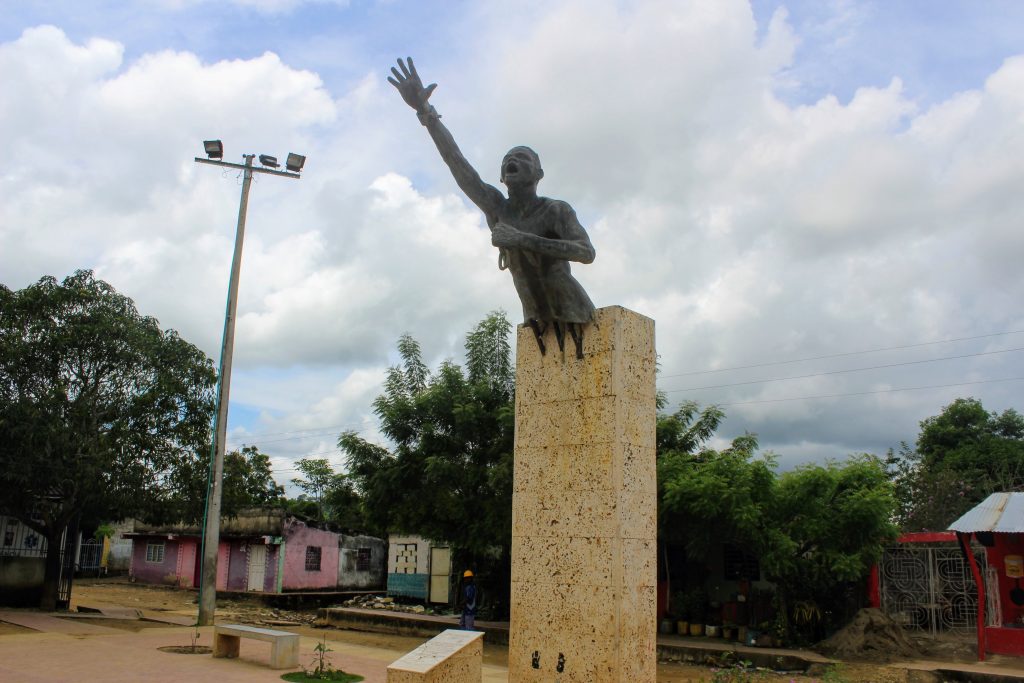
On the other side of the square, a service was taking place in a church.

Aside from the priest, only women and children were in the crowd. Men love fighting over religion, but are usually less committed to its rituals.
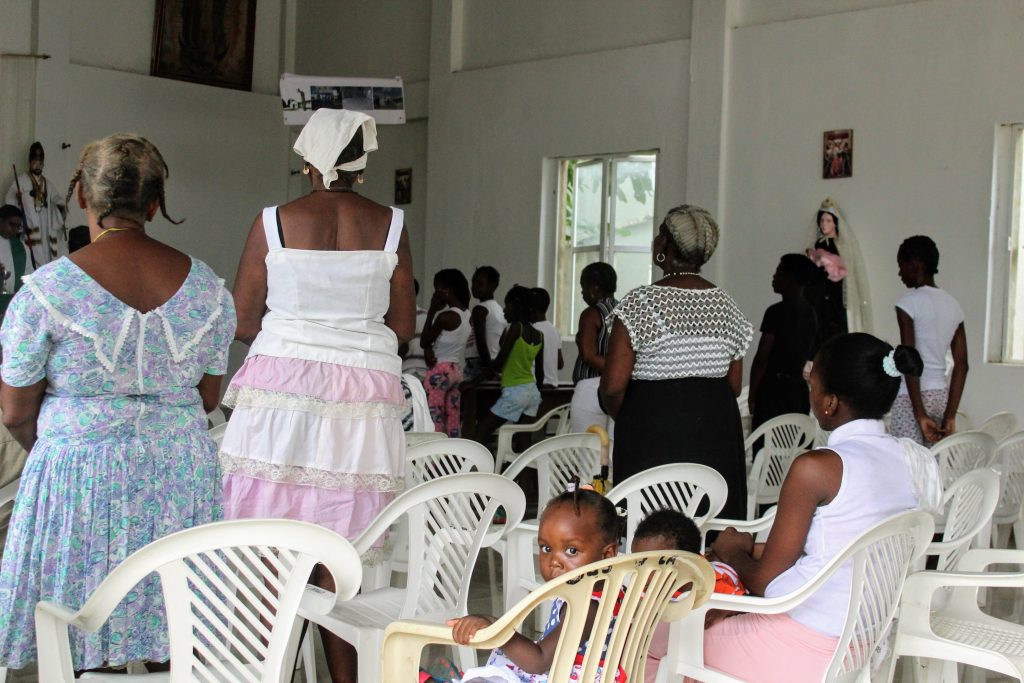
Leaving the square, Diover promised we’ll get to meet several dignatories of the community. With the sun now in full scorching mode, Oxana was pushing our half-broken stroller along the road.
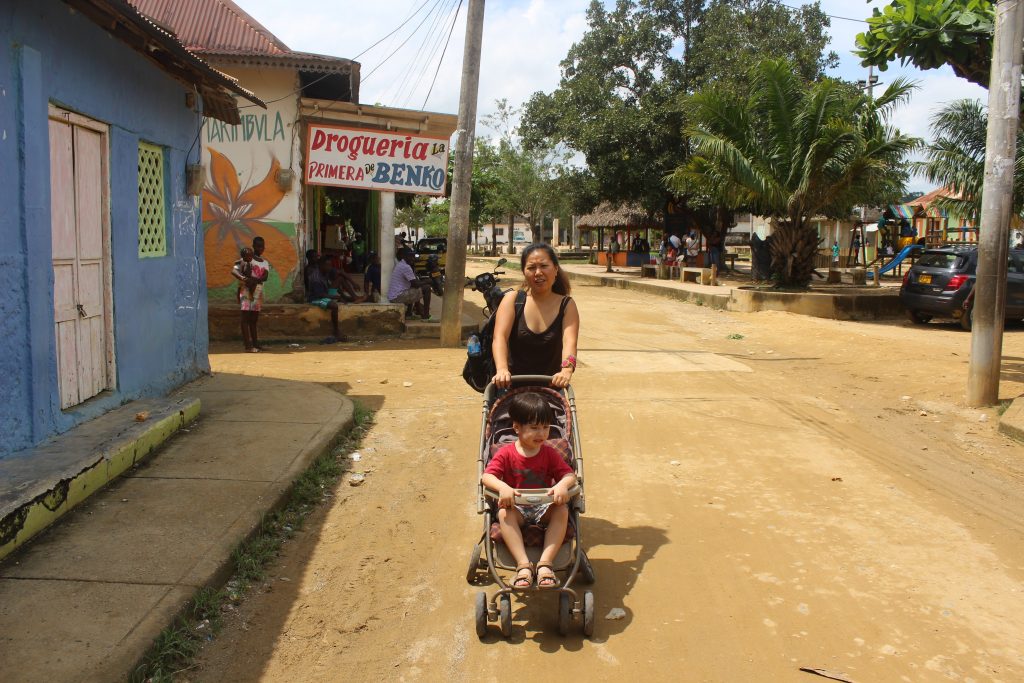
Our first stop was meeting Rosalia, the local curandera – the healer/shaman of the community.
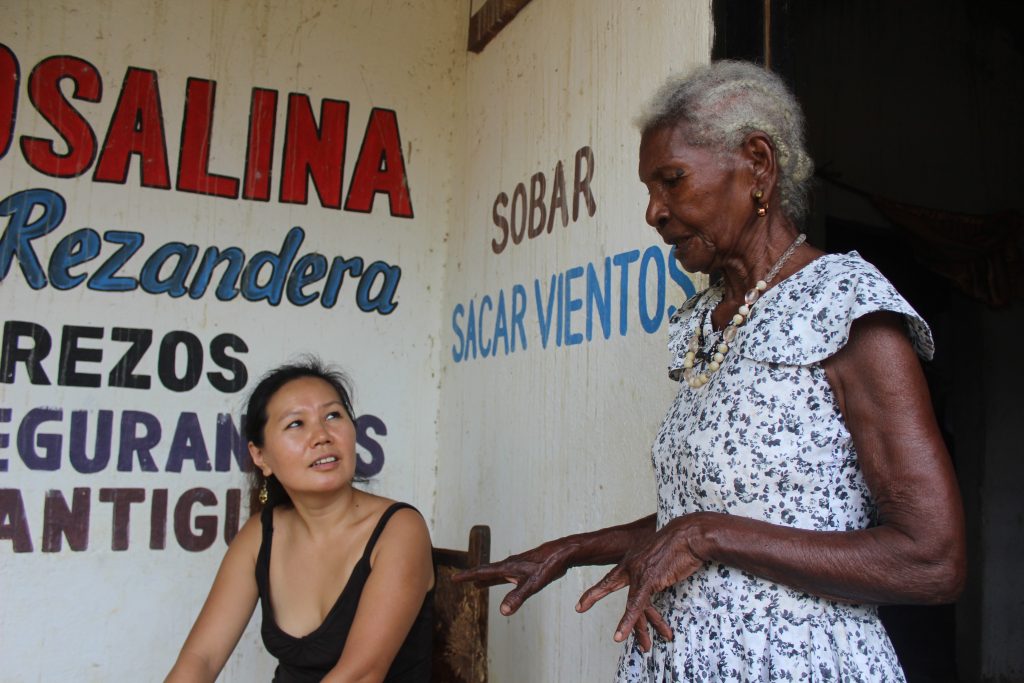
Villagers come to Rosalia to get a blessing or a healing ritual. Which is exactly what we got. After greeting us, she got back inside her modest home, emerging with a bag of herbs she uses for her rituals.
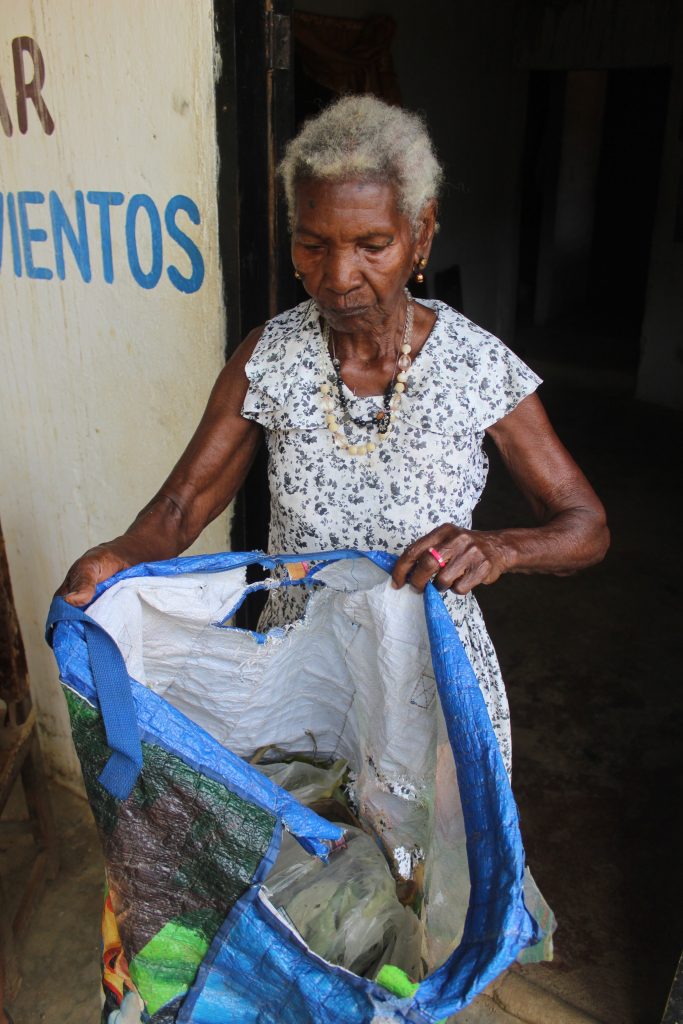
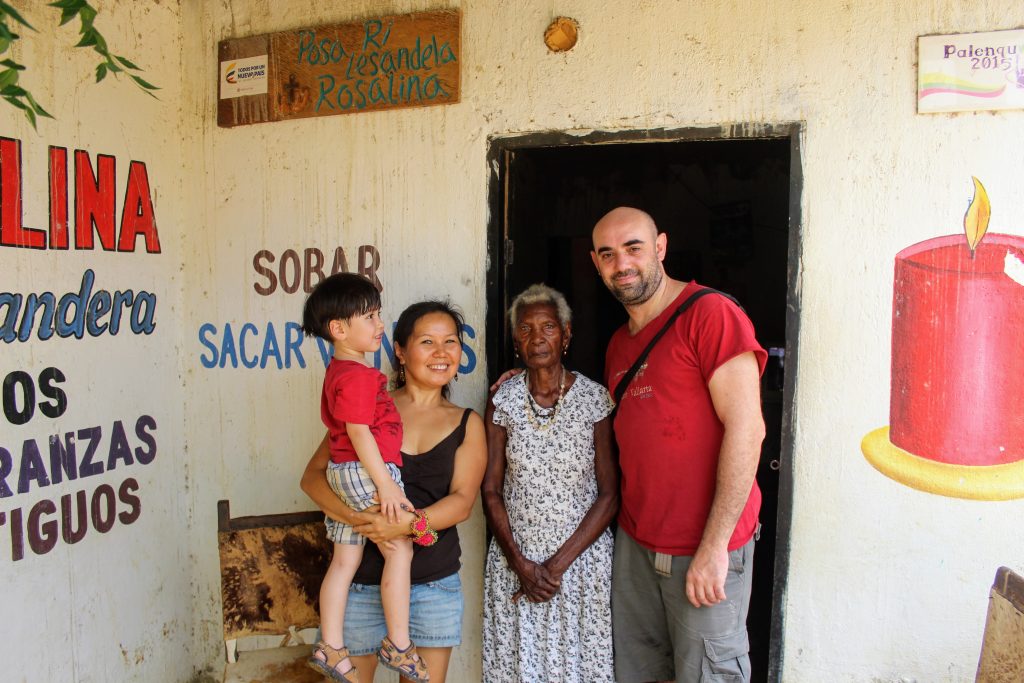

Our next stop was at the home of the renowned recording folklore artist Rafael Cassiani. He is the leader of Sexteto Tabala, a musical group that is the cultural heartbeat of Palenque. Altough they recorded their first album only in 1996, their origin story beings somewhere in the 1930’s in the sugar mills of Colombia. Their sound contains incarnations of Cuban, African and Colombian music. Cassiani has provided lyrics and vocals for the group for nearly 30 years, singing in palenquero and touring with the group in Jamaica, Denmark, Canada, and US.
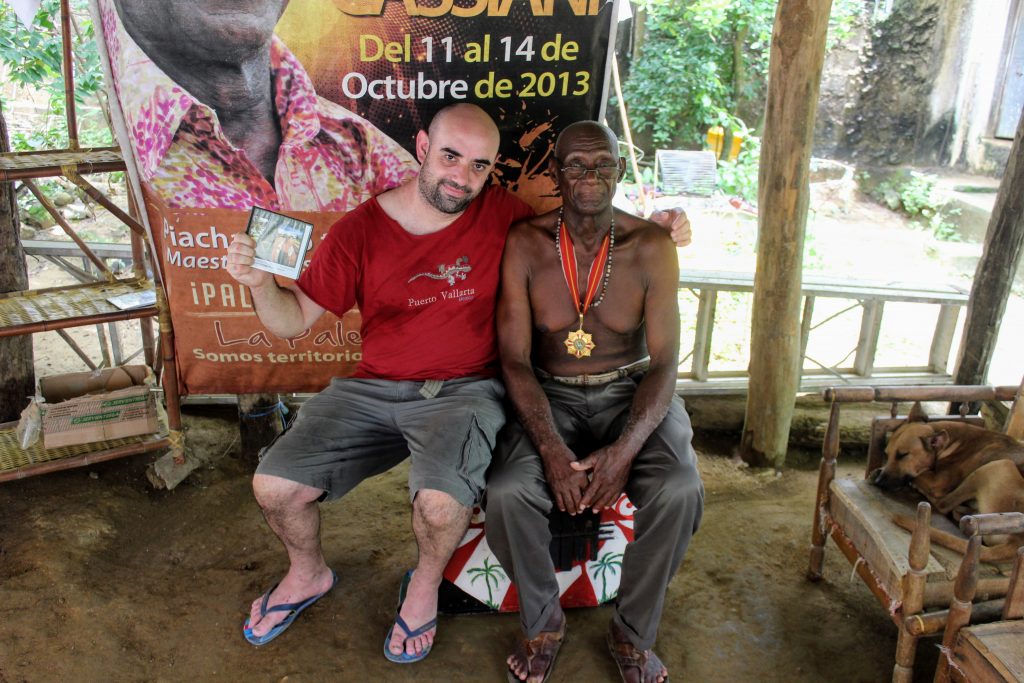
While Cassiani was telling us about his musical career, his wife kept working at her sewing machine.

Then Diover and our toddler broke in a dance, to the sound of “Calamar Tierra de Arena”. Toddler dancing is a proven way to bring hearts closer across cultures.
As it happens, just after saying goodbye to Cassiani and his wife, we met another renowned palenquero musician. Emelia Enelda Reyes “Laburgo” is the leader of Las Alegres Ambulancias (“The Merry Ambulances”). Founded by her deseased mother, the group’s songs take their origin from Lumbalú, the palenquro funeral ritual, which involves dances, music and performances.
Living from music alone is difficult, so Laburgo also sells typical sweets, made from coconut and milk.
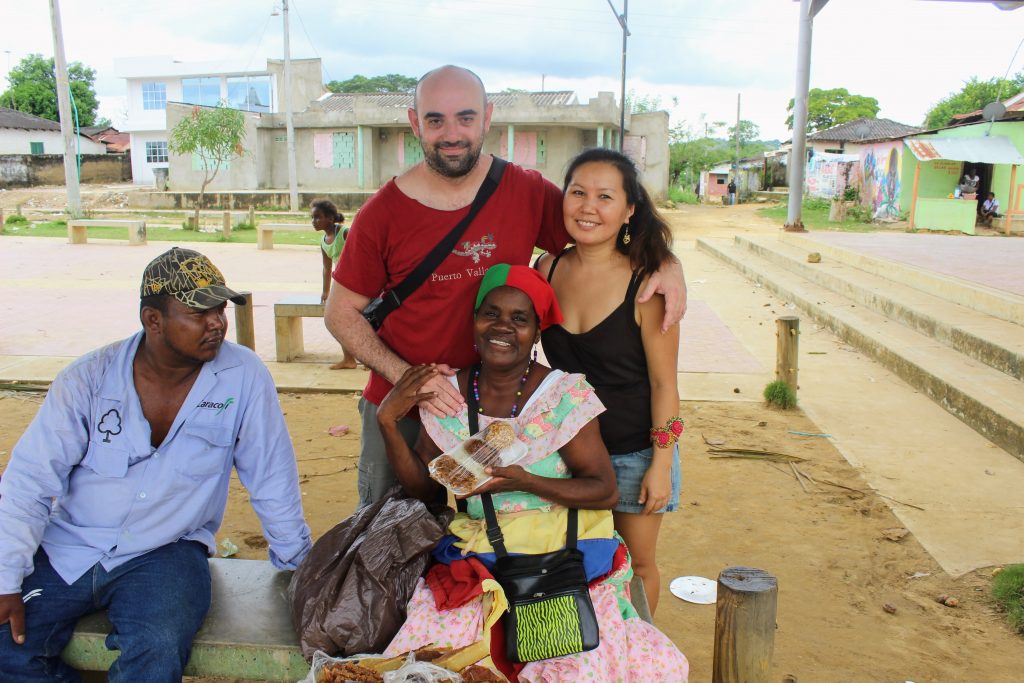
It was lunch time. In the local eatery where Diover brought us, they were serving a rich chicken soup with cornknobs and meat with rice, beans and platanos as the second dish. Everything was tasty and fresh, as is usually the case with popular eateries in the country side.

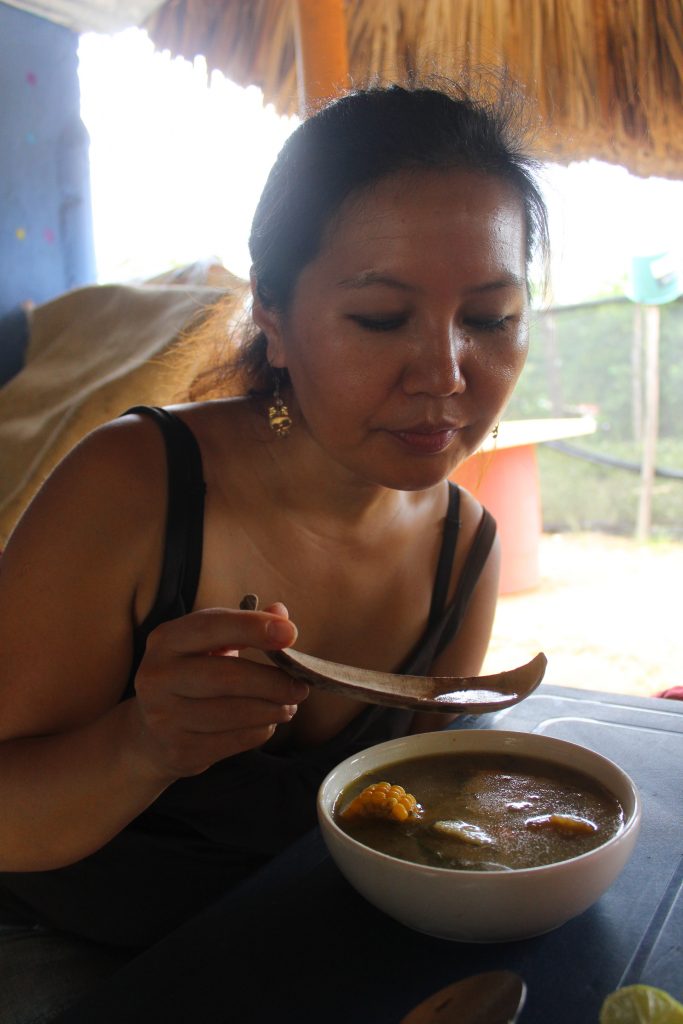
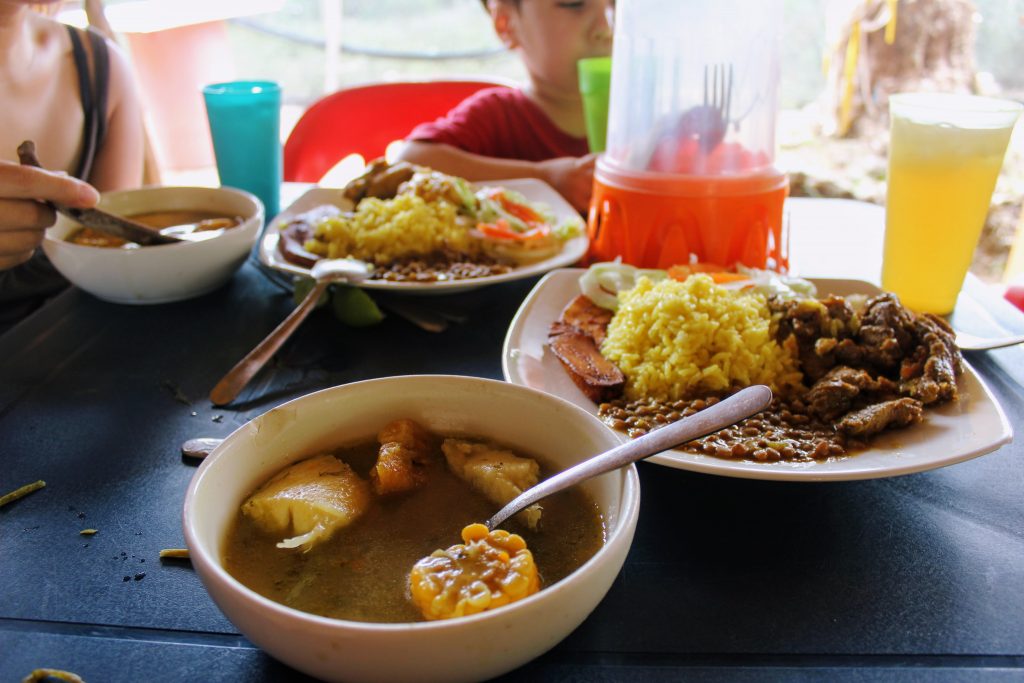
A certain slowness comes down on the village after lunch.
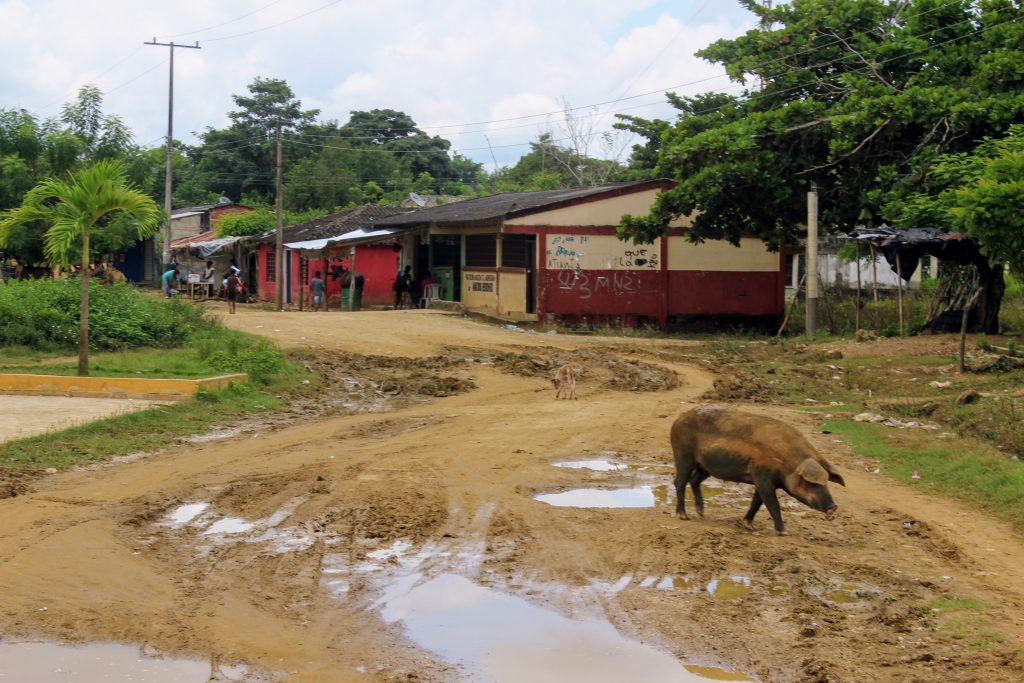
Women, busy working most of the day, have a minute for themselves.
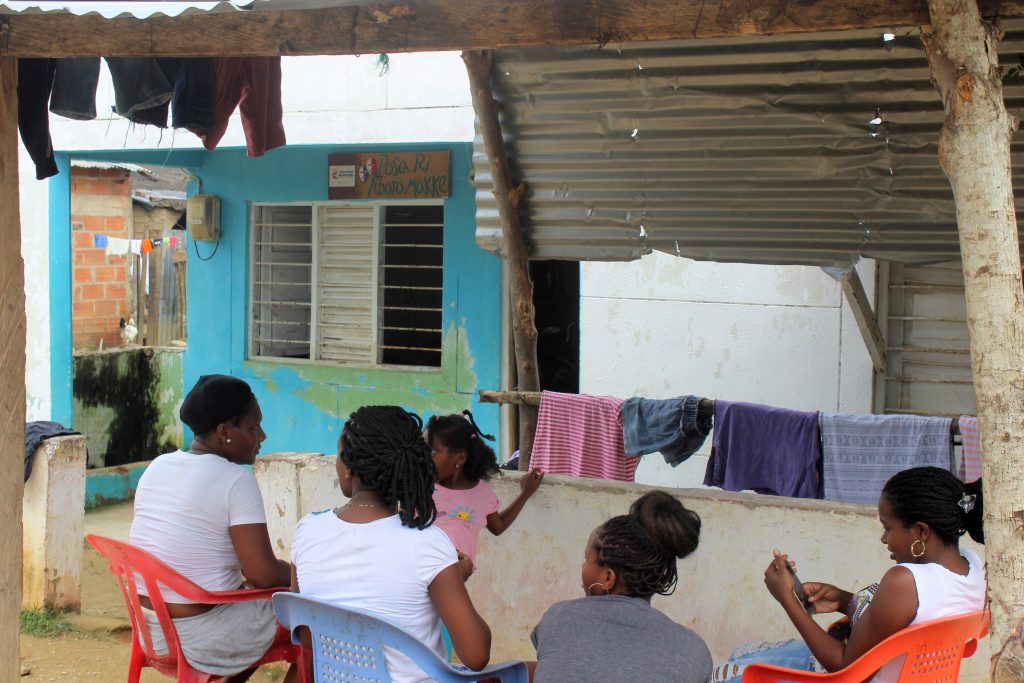
The colourful bus, the only public transportation out of the village, is at rest until the next morning.
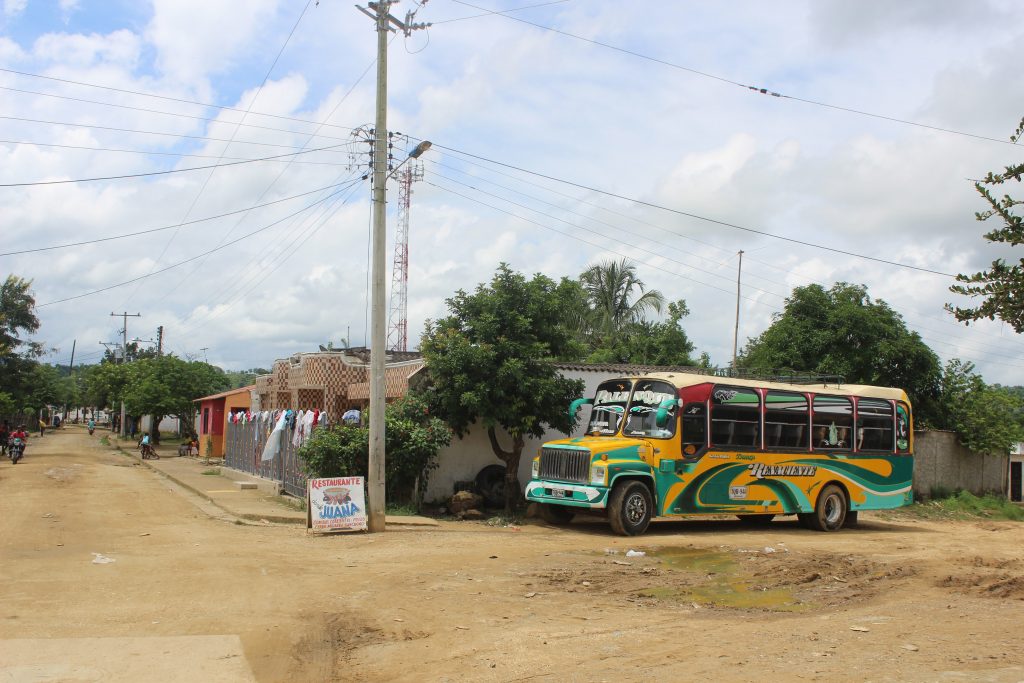
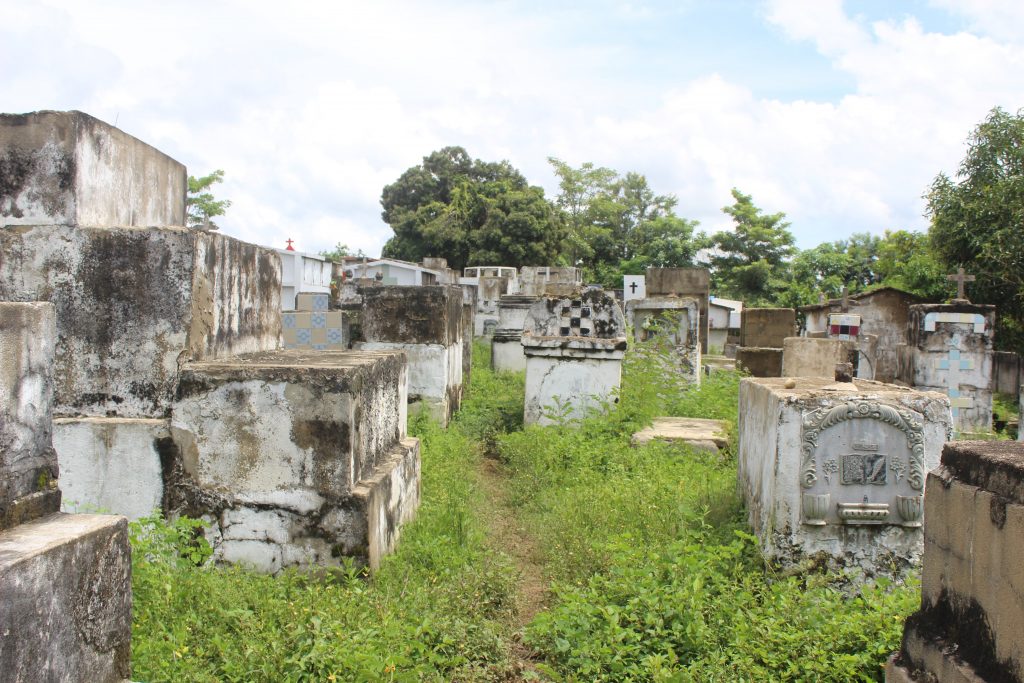

After lunch Diover took us to see the monument to Antonio Cervantes, better known as Kid Pambelé. A Colombian world boxing titleholder, he was born here. Turns out, electricity arrived in the 1970s to Palenque as a government gift in recognition of Antonio Cervantes’ achievments. The schoolhouse, named in honor of Biohó, has an Internet connection now.
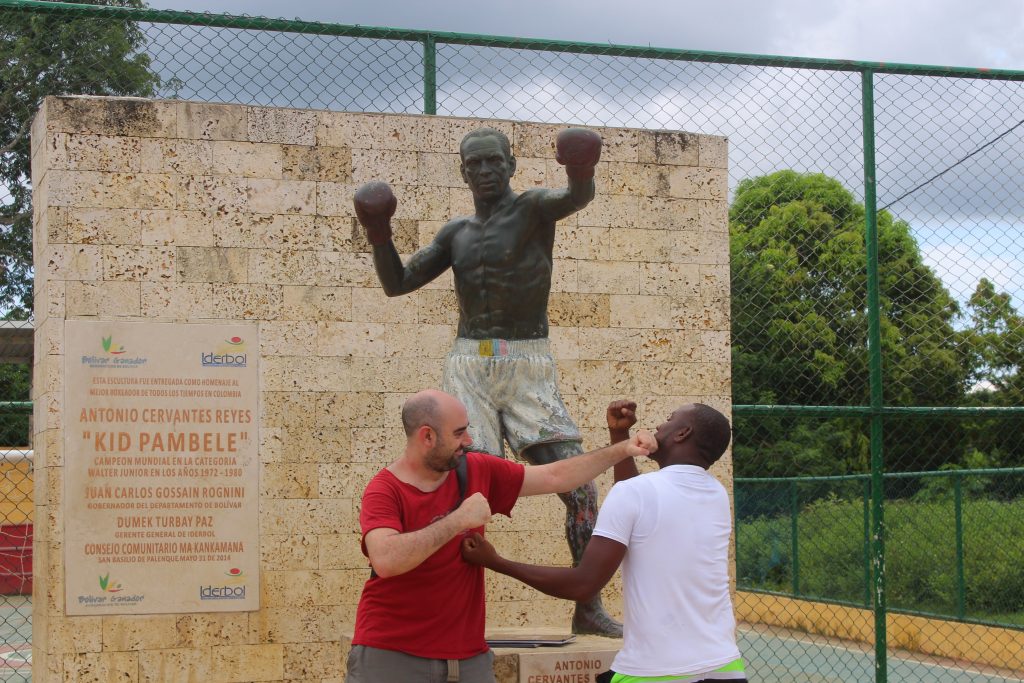
“I forgot to tell you about the Cimarrona Guard”, said Diover, pointing at a woman in a cap passing us. “There is no police in Palenque”, continued Diover. “Instead, we have created our own community self-protection, the Cimarrona Guard”.

The community has maintained a certain political autonomy, which prevents the police from being able to enter their territory. The guard model of Palenque has been an inspiration for other communities in Colombia. In a country awash with violence, being part of such initiative is a risky task, that exposes the volunteers to assaults, threats and assassinations.
Our last stop was in a music school, where we got to play drums.
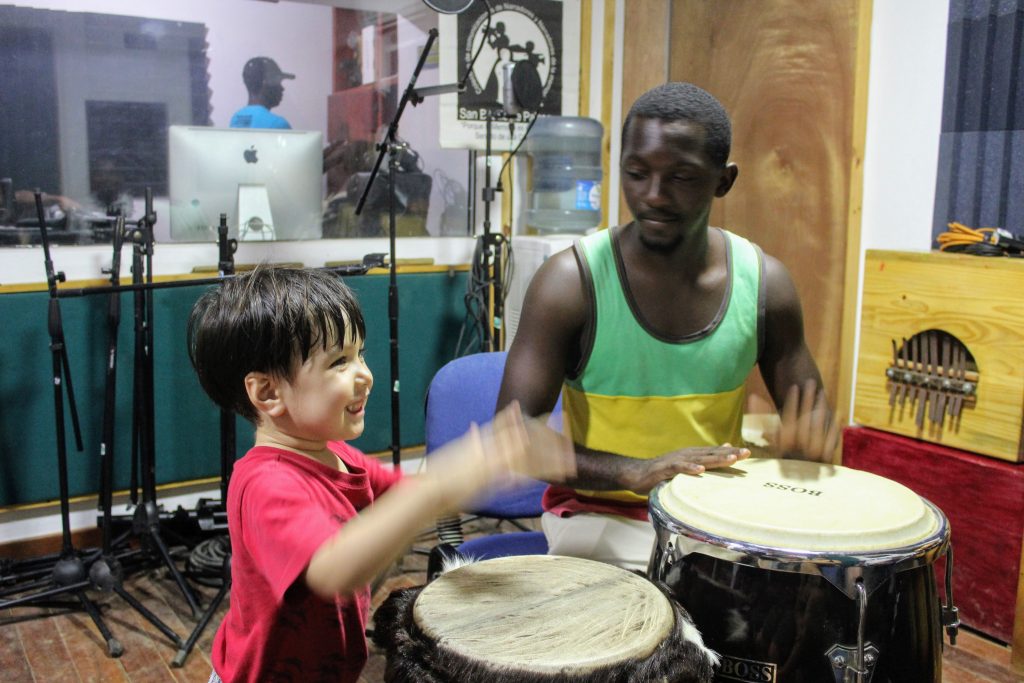
As afternoon was winding down, we sayed goodbye to Palenque. Filled with gratitude and a sense of wonder, we were making our way back to Cartagena.

Our visit in Palenque was back in 2018. A lot has happened since. Covid has been an especially difficult time for the community, with tourism coming to a halt. Recent hurricannes in the Carrebean have brought heavy rains to the region, destroying homes. Rafael Cassiani has passed away.
But tourism is coming back now. Make sure to put Palenque on your list of Colombia’s must-see places. Creating a memory for life, you would also support this wonderful community.
To organize your trip, please contact Diover:
💬 whatsapp: +573183342942

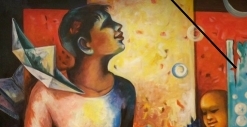
Thank you so much for taking my brain and soul on this imaginary trip!
I love how you put together text, fotos, music, ideas, names and details for contacts. Miss you all very much.
Dear Claudia,
somehow I missed your comment!
Yeah, it was an unforgettable trip. Hope you have a chance to travel in Colombia!
Hugs!
Hola te encontré en Facebook y me gusta como narras tus viajes. Me suscribí a tu Youtube.
Gracias. Att. una colombiana viviendo en Alemania.
Hola Diana,
Gracias por tu comentario! Me alegra que te parece interesante mi blog.
akfs87